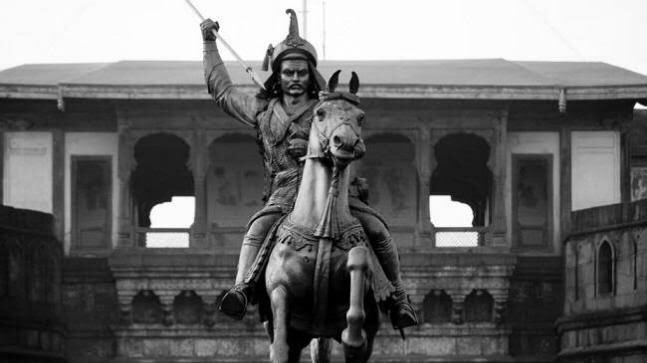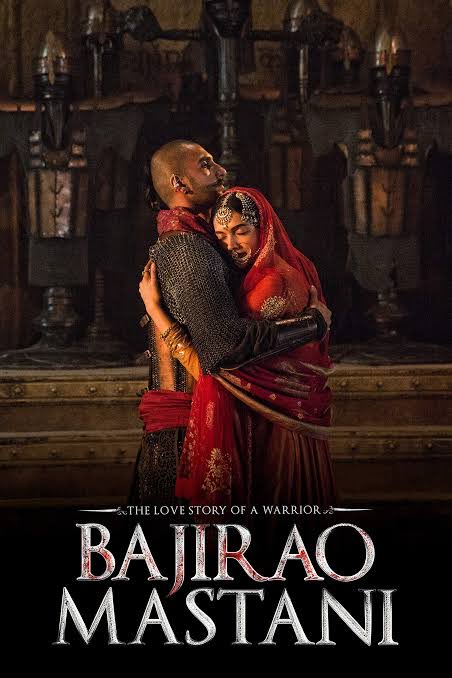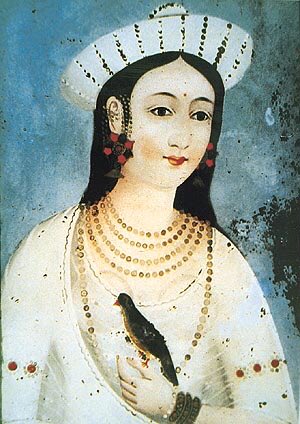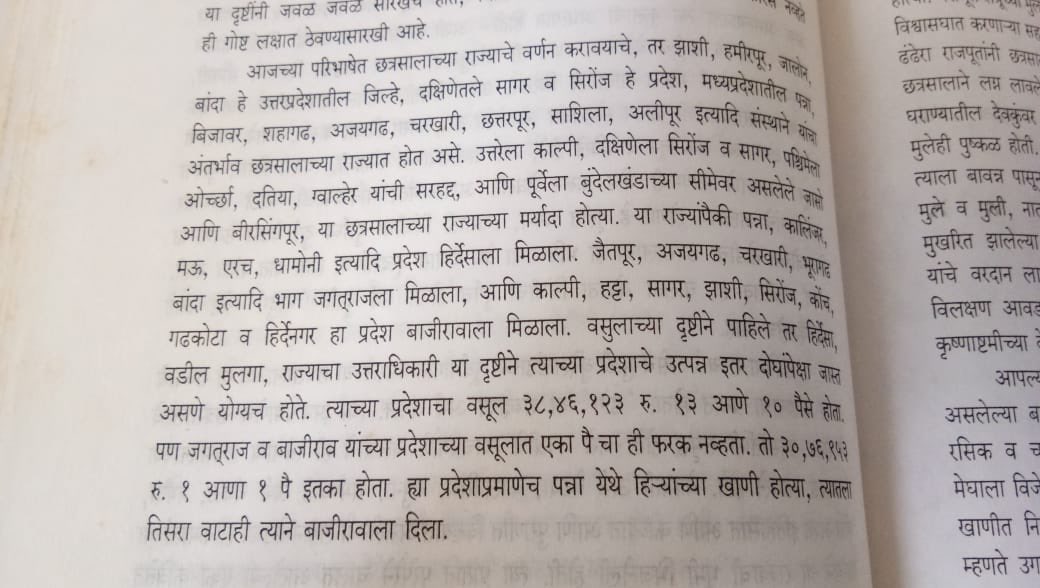The slant-history writing of #Leftist Historians has portrayed many #Hindu Kings and Generals in a negative manner.
One such General was Chhatrapati Shahu Maharaj’s #PeshwaBajirao Ballal - one of the finest cavalry generals in the history of India.
(1/17)
One such General was Chhatrapati Shahu Maharaj’s #PeshwaBajirao Ballal - one of the finest cavalry generals in the history of India.
(1/17)
The 2015 #Bollywood movie #BajiraoMastani too portrayed him as a ‘mentally unstable lover’.
Is Bajirao only limited to Mastani? Definitely not. So, who was Mastani? Mastani was the daughter of King Chhatrasal of #Bundelkhand.
The name of Bundelkhand is also found in..
(2/17)
Is Bajirao only limited to Mastani? Definitely not. So, who was Mastani? Mastani was the daughter of King Chhatrasal of #Bundelkhand.
The name of Bundelkhand is also found in..
(2/17)
...the Puranas, Dasharna Desh, a region famous for its gem mines.
Mastani was very beautiful. She is described as such, but there is no mention of the red color of the neck while eating Paan, as often rumoured by several people. She came into Peshwa’s life after 1729.
(3/17)
Mastani was very beautiful. She is described as such, but there is no mention of the red color of the neck while eating Paan, as often rumoured by several people. She came into Peshwa’s life after 1729.
(3/17)
She belonged to ‘Pranami Pantha’. She was Peshwa Bajirao’s lawfully-wedded wife.
Seeing that #Peshwa was instrumental in repelling the Bangash invasion of Bundelkhand, Maharaj Chhatrasal, married Mastani, his daughter from his #Muslim queen, to the Peshwa.
(4/17)
Seeing that #Peshwa was instrumental in repelling the Bangash invasion of Bundelkhand, Maharaj Chhatrasal, married Mastani, his daughter from his #Muslim queen, to the Peshwa.
(4/17)
Having a powerful and prosperous ally as Bundelkhand, that could provide supplies and army, would be helpful for the #Marathas in their northern expedition and
expansion of their kingdom subsequently fulfilling the dream...
(5/17)
expansion of their kingdom subsequently fulfilling the dream...
(5/17)
...of #ChhatrapatiShivajiMaharaj to capture Delhi, Peshwa Bajirao got married with all this in mind.
In addition to this, a quarter of the tax collected in Bundelkhand was to be deposited in the treasury of the #Marathas every year.
Maharaj Chhatrasal also...
(6/17)
In addition to this, a quarter of the tax collected in Bundelkhand was to be deposited in the treasury of the #Marathas every year.
Maharaj Chhatrasal also...
(6/17)
...gifted elephants and fifty lakh gold coins, besides priceless jewelery, diamonds, gems, pearls, precious clothes, much more to his son-in-law, which Peshwa Bajirao deposited in the Maratha treasury.
#Mastani was very beautiful, but she was also good at fighting.
(7/17)
#Mastani was very beautiful, but she was also good at fighting.
(7/17)
When she arrived to #Pune, she adopted Maharashtrian culture and tried to abide by it.
Mastani lived with the joint Peshwa family for 5 years. Kashibai and Mastani were equally important in Peshwa Bajirao's life.
(8/17)
Mastani lived with the joint Peshwa family for 5 years. Kashibai and Mastani were equally important in Peshwa Bajirao's life.
(8/17)
When the women in the Nizam-ul-Mulk’s Harem requested to see #PeshwaBajirao, he politely rejected this request by saying, "I have two wives, Kashibai and Mastanibai. All other women are mothers and sisters for me. I am the servant of #Chhatrapati Shivaji Maharaj."
(9/17)
(9/17)
In 1734, she gave birth to Krishnarao alias Shamsher Bahadur. Shamsher Bahadur, the son of Peshwa Bajirao & Mastani, was as brave and courageous as Peshwa Bajirao. He fought for the #Marathas and died fighting the Abdali Army in the Third Battle of #Panipat in 1761.
(10/17)
(10/17)
Although she moved to the Mastani Mahal in 1736, she had a cordial relationship with Kashibai.
Peshwa Bajirao’s mother Radhabai and brother Chimaji Appa were unhappy with Mastani since the beginning and never accepted her as their own.
(11/17)
Peshwa Bajirao’s mother Radhabai and brother Chimaji Appa were unhappy with Mastani since the beginning and never accepted her as their own.
(11/17)
There is a general perception that Mastani weakened Peshwa Bajirao's grip on politics and made him addicted. But that assumption is downright false.
Mastani came into #Peshwa Bajirao’s life in 1729. In the 11 years since then,...
(12/17)
Mastani came into #Peshwa Bajirao’s life in 1729. In the 11 years since then,...
(12/17)
...he led several important campaigns including Gujarat, Janjira, Delhi, Bhopal, Vasai, etc. and emerged victorious in all of them.
Secondly, he raised an army on the banks of the Narmada to save the whole of India from the foreign invader Nadir Shah. Nadir Shah did...
(13/17)
Secondly, he raised an army on the banks of the Narmada to save the whole of India from the foreign invader Nadir Shah. Nadir Shah did...
(13/17)
...not land in the south, one of the main reasons being Peshwa Bajirao.
#PeshwaBajirao defeated Nasir Jung. This war was an important one. He restructured the #Maratha political power at the edge of his sword and transformed it into an empire.
(14/17)
#PeshwaBajirao defeated Nasir Jung. This war was an important one. He restructured the #Maratha political power at the edge of his sword and transformed it into an empire.
(14/17)
#Holkar, #Pawar, #Bundela, #Scindia and other Maratha chiefs built an impenetrable board beyond #Narmada. This was a great example of Peshwa Bajirao’s management and foresightedness.
History is a proof that the sudden death of Peshwa #Bajirao...
(15/17)
History is a proof that the sudden death of Peshwa #Bajirao...
(15/17)
...has had a far-reaching effect on the Maratha Empire.
He became Peshwa at the age of 20 and died at the age of 40. This means he had a political life of only 20 years. During these 20 years, he fought 41 battles and, most importantly, remained undefeated.
(16/17)
He became Peshwa at the age of 20 and died at the age of 40. This means he had a political life of only 20 years. During these 20 years, he fought 41 battles and, most importantly, remained undefeated.
(16/17)
However, the hatred for Mastani did not end even after her death. But even today, Bajirao-Mastani's name is mentioned while giving proofs of noble love.
Although history has denied this position, it has remained and will remain in the minds of the common people.
(17/17)
Although history has denied this position, it has remained and will remain in the minds of the common people.
(17/17)
References:
1. पहिला बाजीराव, प्रा.श.श्री.पुराणिक
2. James Grant Duff, A History of the Marathas
3. Bernard Montgomery, 1st Viscount Montgomery of Alamein (1972). A Concise History of Warfare
4. https://en.m.wikipedia.org/wiki/Baji_Rao_
A big thanks to @AadiShakti1010
1. पहिला बाजीराव, प्रा.श.श्री.पुराणिक
2. James Grant Duff, A History of the Marathas
3. Bernard Montgomery, 1st Viscount Montgomery of Alamein (1972). A Concise History of Warfare
4. https://en.m.wikipedia.org/wiki/Baji_Rao_
A big thanks to @AadiShakti1010


 Read on Twitter
Read on Twitter





